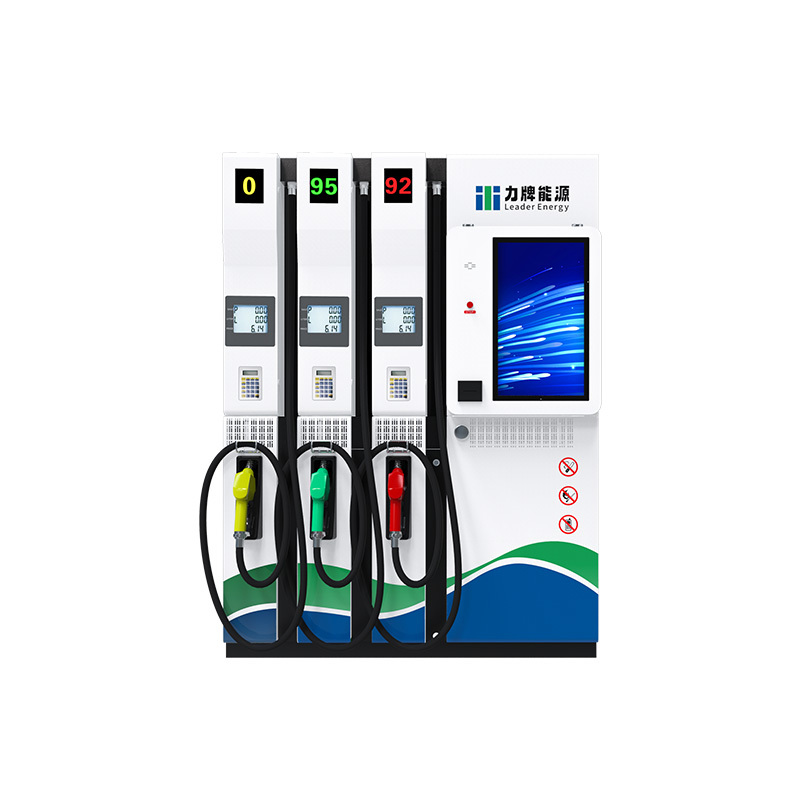Understanding Double Hose Fuel Dispensers: Key Insights for the Transportation Industry
In the ever-evolving transportation industry, double hose fuel dispensers play a crucial role in the efficient distribution of fuel at service stations. These devices are designed to deliver fuel through two separate hoses, allowing for simultaneous dispensing of two different fuel types or grades. Understanding the mechanics and advantages of double hose fuel dispensers is essential for professio
In the ever-evolving transportation industry, double hose fuel dispensers play a crucial role in the efficient distribution of fuel at service stations. These devices are designed to deliver fuel through two separate hoses, allowing for simultaneous dispensing of two different fuel types or grades. Understanding the mechanics and advantages of double hose fuel dispensers is essential for professionals in the fueling station equipment sector.
**Operational Mechanism**
At the heart of a double hose fuel dispenser lies its dual-hose system. Each hose is connected to a different fuel source, enabling the dispenser to provide multiple fuels, such as gasoline and diesel, without requiring a manual switch. This feature significantly enhances operational efficiency, as it caters to varied customer needs without delaying service times. The design typically includes a robust pump system that ensures a consistent and reliable flow of fuel.
**Advantages of Double Hose Fuel Dispensers**
1. **Increased Efficiency**: With the ability to dispense two fuels simultaneously, double hose dispensers reduce wait times for customers. This is particularly beneficial during peak hours when high traffic can lead to prolonged service times.
2. **Enhanced Flexibility**: These dispensers allow gas stations to offer a wider range of products. Stations can cater to both traditional gasoline consumers and those requiring diesel, thus broadening their customer base and increasing revenue streams.
3. **Space-Saving Design**: The compact nature of double hose systems makes them ideal for stations with limited space. Instead of installing multiple single-hose dispensers, a single double hose unit can serve the same purpose, optimizing the layout and reducing the number of units required.
4. **Advanced Monitoring and Control**: Many modern double hose dispensers come equipped with advanced monitoring systems that track fuel dispensed, user analytics, and maintenance alerts. This data is invaluable for managing fuel inventory efficiently and ensuring that the dispensers operate smoothly without unexpected downtime.
**Considerations for Implementation**
While the benefits of double hose fuel dispensers are clear, there are multiple factors to consider prior to installation. Ensuring compliance with local regulations and safety standards is paramount. Additionally, investing in high-quality equipment is crucial for minimizing maintenance costs and extending the operational lifespan of the dispensers. Regular training for staff on safety protocols and dispenser operation can also enhance service quality and customer satisfaction.
In conclusion, double hose fuel dispensers represent a significant advancement in fueling station technology within the transportation sector. By understanding their operational mechanisms and inherent advantages, professionals can make informed decisions that benefit their businesses and enhance customer experiences. The strategic implementation of these dispensers not only improves efficiency but can also lead to increased profitability in the competitive landscape of fuel retail.
**Operational Mechanism**
At the heart of a double hose fuel dispenser lies its dual-hose system. Each hose is connected to a different fuel source, enabling the dispenser to provide multiple fuels, such as gasoline and diesel, without requiring a manual switch. This feature significantly enhances operational efficiency, as it caters to varied customer needs without delaying service times. The design typically includes a robust pump system that ensures a consistent and reliable flow of fuel.
**Advantages of Double Hose Fuel Dispensers**
1. **Increased Efficiency**: With the ability to dispense two fuels simultaneously, double hose dispensers reduce wait times for customers. This is particularly beneficial during peak hours when high traffic can lead to prolonged service times.
2. **Enhanced Flexibility**: These dispensers allow gas stations to offer a wider range of products. Stations can cater to both traditional gasoline consumers and those requiring diesel, thus broadening their customer base and increasing revenue streams.
3. **Space-Saving Design**: The compact nature of double hose systems makes them ideal for stations with limited space. Instead of installing multiple single-hose dispensers, a single double hose unit can serve the same purpose, optimizing the layout and reducing the number of units required.
4. **Advanced Monitoring and Control**: Many modern double hose dispensers come equipped with advanced monitoring systems that track fuel dispensed, user analytics, and maintenance alerts. This data is invaluable for managing fuel inventory efficiently and ensuring that the dispensers operate smoothly without unexpected downtime.
**Considerations for Implementation**
While the benefits of double hose fuel dispensers are clear, there are multiple factors to consider prior to installation. Ensuring compliance with local regulations and safety standards is paramount. Additionally, investing in high-quality equipment is crucial for minimizing maintenance costs and extending the operational lifespan of the dispensers. Regular training for staff on safety protocols and dispenser operation can also enhance service quality and customer satisfaction.
In conclusion, double hose fuel dispensers represent a significant advancement in fueling station technology within the transportation sector. By understanding their operational mechanisms and inherent advantages, professionals can make informed decisions that benefit their businesses and enhance customer experiences. The strategic implementation of these dispensers not only improves efficiency but can also lead to increased profitability in the competitive landscape of fuel retail.
Previous








